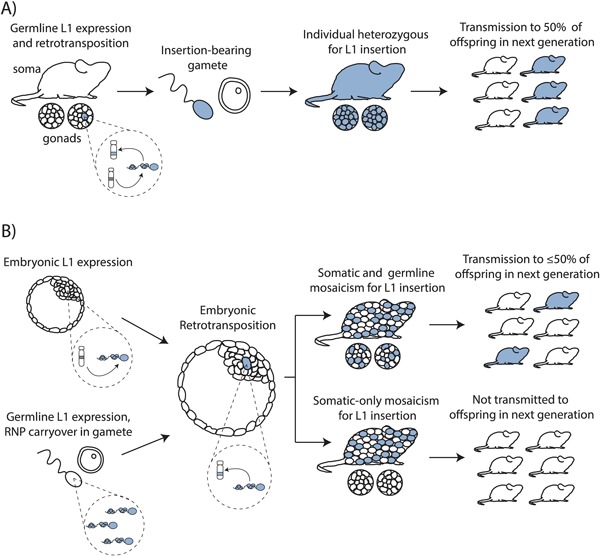Figure 3.

Germline and embryonic L1 retrotransposition. A) Germline L1 retrotransposition. A retrotransposition‐competent L1 (gray) undergoes retrotransposition at some point during germline development (gonads represented by circles under mouse) to generate a new insertion (blue). If a gamete harboring this insertion (blue sperm) undergoes fertilization, the resultant animal will be heterozygous for the insertion (blue mouse) and is expected to transmit the insertion to ≈50% of its offspring. B) Embryonic L1 retrotransposition. From left: L1 expression and RNP formation may occur in a cell of the early embryo (above), or an L1 RNP formed in the parental germline may be carried over in a gamete during fertilization (below). Completion of retrotransposition in a pluripotent embryonic cell will give rise to an insertion for which the embryo is mosaic (initial insertion‐harboring cell shown in blue). Descendants of the insertion‐harboring cell may contribute to the somatic and germ cell lineages (above), rendering the insertion heritable by up to ≈50% of offspring. Alternatively, insertion‐harboring cells may contribute only to somatic cell lineages (below), in which case the insertion is not heritable by offspring.
